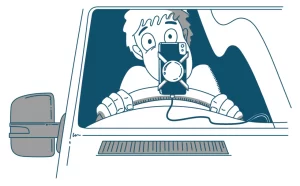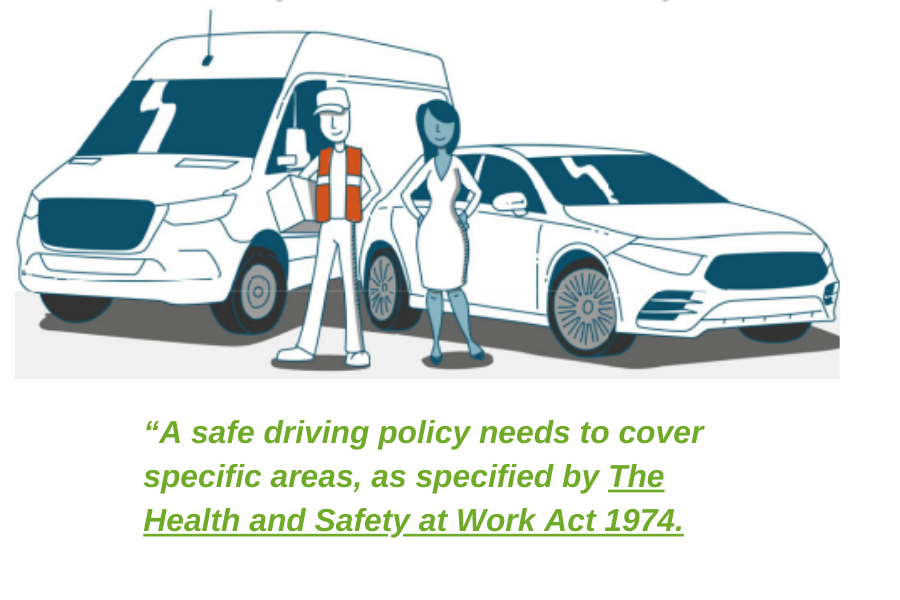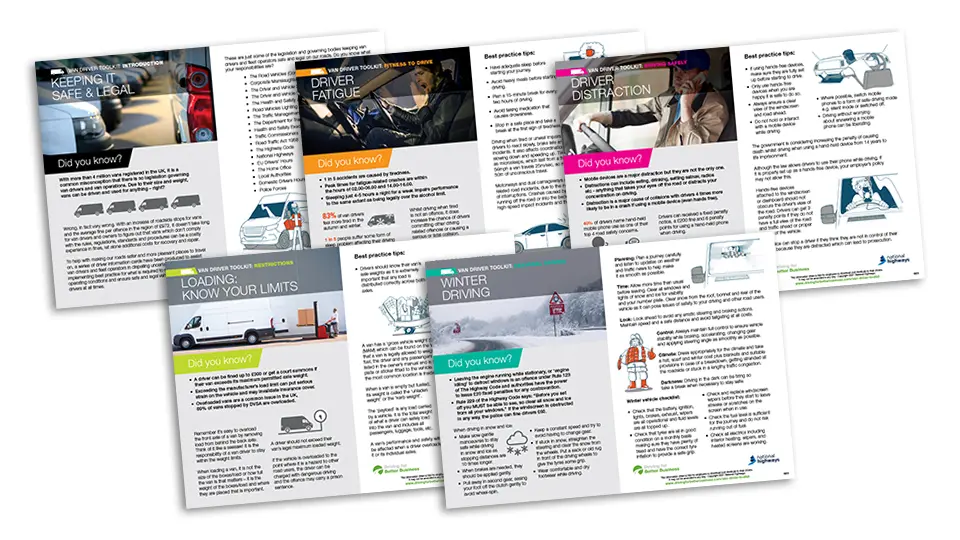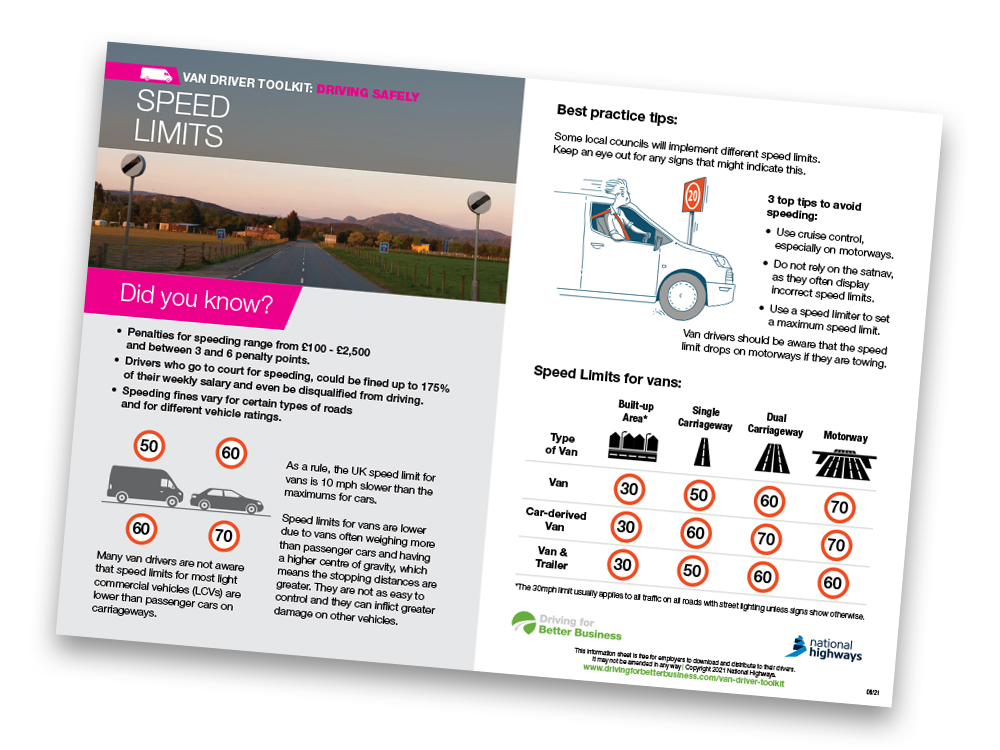Speed Limits
July 2024
Speed limits are a maximum – not a target
Inappropriate or excessive speed is one of the fatal five – in other words, a leading killer on the roads. In 2022 almost 400 people died in collisions and more than 3,000 were seriously injured in a collision involving excessive speed or a vehicle going too fast for the conditions.
2021 government data on speed compliance shows that more than half of all motorists, van drivers and motorcyclists exceeded the speed limits on motorways. The same research showed more than half of car and van drivers and almost half HGV drivers broke the speed limit on 30mph roads. This is not a minority problem – almost 5 out of 10 drivers break the law on a regular basis, on roads which are also used by cyclists, children, pedestrians, horse riders and the elderly. Speeding also increases the numbers of hazards and manoeuvres as drivers are likely to tail-gate slower drivers and overtake more frequently.


What Fleet Managers can do to ensure Speed Limits are respected:
Your drivers need to be aware that they must obey speed limits at all times, and drive slower than the posted speed limit if conditions dictate. You must also ensure that drivers are not pressured or incentivised to speed by over-ambitious scheduling, incentivised targets, or poorly planned journeys. It is not acceptable to turn a blind eye!
To help manage speed, you could:
- Encourage drivers to use a speed limiter or cruise control
- Set telematics parameters to the posted speed limit
- Educate drivers about impact speeds and non-linear speed lost
- Ensure van drivers understand they may be subject to lower limits than cars
- Ensure speeding is prohibited in your driving for work policy
Other Resources – Speed Limits
A lawyer’s thoughts on your responsibility to eliminate speeding.
Speed limits are a legal and mandatory and not a target. Braking distances are greater, for instance, in wet and icy conditions, and you would not drive on a national speed limit carriageway at the maximum of 60 mph in fog.
For those old enough to remember Play Your Cards Right with Bruce Forsyth, his famous catchphrase was “points mean prizes”, but the opposite is certainly true in road law.
Read more







